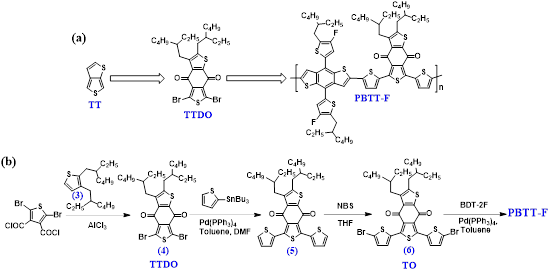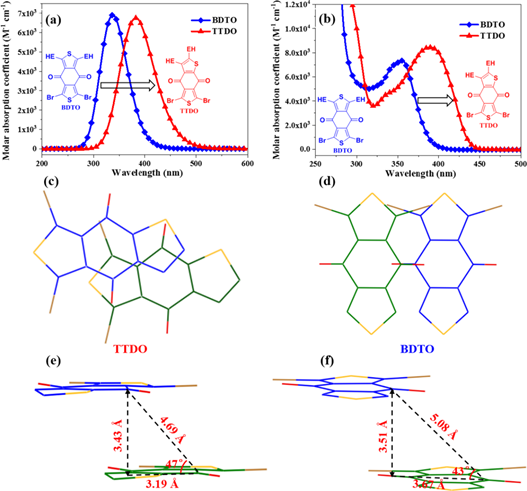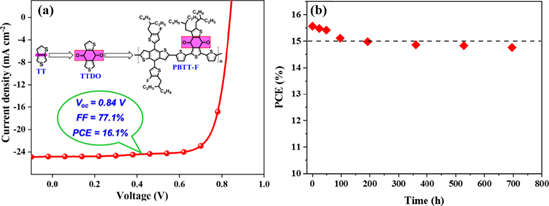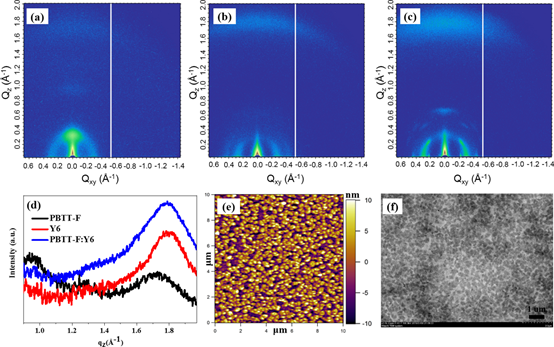Brighter light for organic solar cells
2020-02-23
Researchers at Southern University of Science and Technology (SUSTech) in China have designed and synthesized a new polymer donor material which demonstrates high solar conversion efficiency in non-fullerene polymer solar cell applications.
The team of researchers, led by Associate Professor He Feng from the Department of Chemistry at SUSTech, had been investigating the polymer donor materials of non-fullerene bulk heterojunction polymer solar cells (BHJ PSCs) to pump up their efficiencies. The work was recently published in Advanced Materials and titled “A Benzo[1,2‐b:4,5‐c′]Dithiophene‐4,8‐Dione‐Based Polymer Donor Achieving an Efficiency Over 16%”.
In this contribution, a new donor polymer, named PBTT-F, was developed through the design of cyclohexane-1,4-dione embedded into a thieno[3,4-b]thiophene (TT) unit. When blended with the acceptor polymer, the PBTT-F-based photovoltaic device exhibited an outstanding power conversion efficiency (PCE) of 16.1%. The PBTT-F-based polymer solar cells also showed excellent stability after storage for approximately 700 hours in a glove box, maintaining a high PCE of approximately 14.8%. The team’s findings indicate promising future commercial applications.

Figure 1. (a) structure of polymer PBTT-F, (b) synthesis route of monomer and polymer PBTT-F

Figure 2. Molecular structure, optical, and electrochemical properties. (a) Chemical structure and calculated UV-Vis absorption spectra for the BDTO and TTDO monomers. (b) UV-Vis absorption spectra for BDTO and TTDO in diluted solution. (c) Crystal structure of the TTDO and a perpendicular view of the plane. (d) Crystal structure of the BDTO and a perpendicular view of the plane. (e) Packing diagram for TTDO. (f) Packing diagram for BDTO.
The density functional theory (DFT) calculation proved that the ultraviolet-visual (UV-vis) absorption spectrum of TTDO was much more red-shifted than that of BDTO, which revealed much much stronger intermolecular interactions in new developed TTDO unit. At the same time, the calculation also indicates that the TTDO is a stronger electron-withdrawing group than BDTO, which would be beneficial for enhancing the intramolecular charge transfer in the corresponding polymer with elevated solar conversion efficiency.

Figure 3. The photovoltaic performance: (a) The J−V curves of PSCs based on PBTT-F: Y6 and (b) the device stability tests.
The team then created a PSC using the optimal layout. They determined that their device had a photoelectric conversion efficiency of 16.1% with a thin PSC. With a thick film of 190 nm, the device remained at 14.2% efficiency, representing significant industrial opportunities for large-scale PSCs. The team’s device was also highly stable and maintained exceptionally high efficiency after more than seven hundred hours.

Figure 4. 2D GIWAXS patterns of (a) pristine PBTT-F, (b) neat Y6, (c) PBTT-F:Y6 blend films. (d) GIWAXS line-cut profiles along the out-of-plane (solid line) directions. (e) AFM height image (10 µm × 10 µm) of the optimized PBTT-F:Y6 blend film with thermal annealing at 110 oC. (f) TEM image of the optimized PBTT-F:Y6 blend film treated by thermal annealing at 110 oC (scale bar = 1 µm).
Their research offers new directions in PSCs in terms of donor polymers and non-fullerene solar cell design.
SUSTech-PKU joint doctoral candidate Chao Pengjie is the first author with SUSTech Research Assistant Professor Chen Hui as co-author. Associate Professor He Feng is the only corresponding author of the paper. The Department of Chemistry and the Shenzhen Grubbs Institute are the corresponding units. The research team also worked with the School of Advanced Materials at the Peking University Shenzhen Graduate School (PKUSZ) and the State Key Laboratory of Luminescent Materials and Devices at South China University of Technology (SCUT).
The National Natural Science Foundation of China (NSFC), the Guangdong Innovative and Entrepreneurial Research Team Project, the Shenzhen Fundamental Research Program, and the Shenzhen Nobel Prize Scientists Laboratory Project supported the research. The authors also thank the SUSTech Core Research Facilities (SCRF) for their AFM and TEM measurements.
Paper link: https://onlinelibrary.wiley.com/doi/10.1002/adma.201907059




